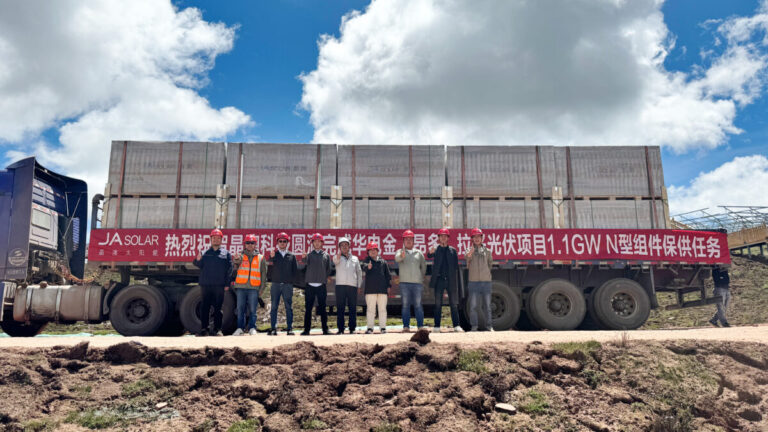JA Solar has supplied its n-type DeepBlue 4.0 Pro modules for a 1.1 GW solar installation in Tibet. The project is believed to be the world’s largest combined livestock and solar energy project currently under construction.
Construction is underway on a 1.1 GW solar project in Tibet, China.
The project includes two sites combining livestock farming and solar energy, located in Angduo Township, Mangkang County, and Gongjue Township, Latuo County, in eastern Tibet. China Huadian Corp. finances the project.
Once operational, the sites will work in conjunction with hydroelectric power stations along the upper Jinsha River. This is what a JA Solar spokesperson said pv magazine that the project will generate 6.518 billion kWh of electricity per year.
“It will effectively conserve soil and water, increase the green cover of the country, improve the local ecological environment and promote livestock farming, thereby achieving coordinated development of economic growth and environmental protection,” the spokesperson added.
The projects are among the first to integrate wind, solar, hydropower and energy storage in the region. The facility in Angduo Township is also believed to be the largest livestock farming and supplementary solar energy project under construction in the world.
JA Solar supplied its n-type DeepBlue 4.0 Pro solar panels for the project. The company said the modules passed the tests for IEC standards, threshing machine, salt fog corrosion, ammonia corrosion, dust and sand, non-uniform snow load and wind tunnel conditions. They also demonstrated outdoors in Mohe, Heilongjiang province – one of China’s coldest regions.
The company’s DeepBlue 4.0 Pro modules were previously used in a 200 MW project in Chamdo, Tibet, which was connected to the grid in November 2023. In March this year, the module received the highest + assessment certificate in the field of Frontrunner Plus Cold Climate Test from the China General Certification Center.
Earlier this year, Chinese authorities deployed 50 MW of solar power, combined with 40 MWh of battery storage, in southeastern Tibet.
This content is copyrighted and may not be reused. If you would like to collaborate with us and reuse some of our content, please contact: editors@pv-magazine.com.


